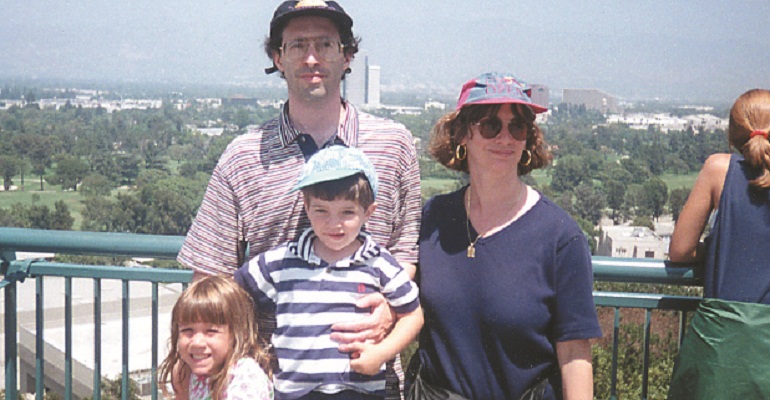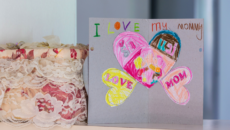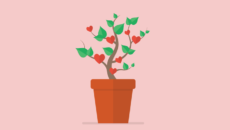Whenever I tell someone that, a year after we adopted our daughter, my wife became pregnant with our son, the response tends to be the same: “Isn’t that always the way?” If that were indeed the case, the cure for infertility would be adoption. In reality, less than 14% of parents who adopt their first child go on to have a biological child. Similarly, families faced with secondary infertility often hear the comment, “You got her a sister or brother!”—as if you went out and picked up a toy for your child. For many outside the adoption community, the notion of a family formed by birth and adoption seems to be a perplexing one.
Families formed by adoption and birth deal with issues all their own. These blended families embrace children who have different family stories and, often, diverse cultural backgrounds. Of course, there is a range of similarities and differences in every family. But in the blended family, that range—of ability, temperament, and appearance—will probably be broader.
Who’s Nose Is This Anyway?
A neighbor once asked who had the blonde hair in our family, noting my daughter’s blonde head beside my son’s and wife’s dark ones and my own dark (if receding) hairline. “She has the blonde hair,” I replied, nodding toward my daughter—fully understanding that I was expected to trace the gene for hair color to some distant relative. While such conversation may be only small talk for most families, in a family formed by adoption, it can be like nails across a blackboard. The child who was adopted is set apart, not only from her parents, but also from her siblings—no matter how quick or clever your response.
As they grow, children become acutely aware of their similarities and differences. Our daughter has pointed out time and again that hers is a different nose from ours. The fact that hers is less “outstanding” is of no consolation. No matter how pretty, her nose remains different. And no matter how often you point out the many differences and similarities in a family—any family—conspicuous differences remain conspicuous. Your child will experience, sometimes painfully, a sense of uniqueness. As parents, we want nothing more than to ease our children’s pain. But we cannot deny them the hurt and loss they may sometimes feel. We cannot deny them, either, the parts of their stories that are theirs alone. It does not mean they are less a part of our families—of this, we must reassure them. It simply means recognizing that there are real differences among our children.
According to Carol, who adopted her daughter and later gave birth to a son:
Although the ways my children came into my life are very different, the way I love and care for them is very much the same. I just think of them as ‘my kids’—and I waited for a long time to have the pleasure of saying that! I would not be totally honest, however, if I did not recognize the fact that when I look into my son’s beautiful green eyes I feel a sense of pride and connection, knowing that those eyes were the same eyes I looked at when I was young and looked in my mother’s eyes, and that they also look very much like my own. It doesn’t change how much I love my daughter or how important she is in my life. It also does not mean I feel closer to my son. Sometimes we can become so sensitive to the feelings of our adopted child and the pain of not sharing a physical resemblance that it is difficult for us to embrace those similarities with our biological child. It is a difficult balance that, fortunately, does not come up every day.
Cultural Blending
The need to recognize and embrace similarities and differences is indeed a delicate balancing act, especially in a culturally blended family. Marilyn, adopted from Korea into an Irish family at the age of six, says:
Until I was eight, I thought I was Irish. Instead of acknowledging any differences, my parents and my three new siblings just tried to act as though I was exactly the same as everyone else. In some ways that made me feel a strong bond and made me part of the family, but as I grew up, I also felt that they were not recognizing that I was different. After all, I was an Asian girl in a family of five Caucasians, in an all-Caucasian neighborhood and an all-Caucasian school. I don’t think they really thought about it. They meant well and just wanted me to feel like part of the family, which I did. But as I got older, it was clear that I had another part to my story and to my life. I had a wonderful relationship with my brothers and my sister, but I wish they had acknowledged my Asian background and culture.
Today, parents in most blended families agree that there is a need to both assimilate and recognize the cultural differences that exist. This is certainly the case for Elaine, who lives in Connecticut with her three children, two of whom were adopted:
Our older son was adopted from Colombia and we’ve tried to educate him about his culture by joining the Latin American Parents Association (LAPA). The boys (one biological and one adopted) are as different as two boys can be, and not just in how they look. Yet they are very bonded as brothers. The cultural difference has never been an issue; they simply explain to anyone who asks that brothers sometimes look different. Our daughter is only two and was recently adopted. Her look is also distinctive, as she is part African American. The boys are thrilled to have a baby sister and she has fit right in. She sees her biological grandmother regularly, which helps her in learning about that part of her culture, an aspect that we will try to give her as she gets older. As I look at the three of them, I love them all equally. But I think it’s healthy to recognize distinctions and to embrace the cultural differences that make up our family.
Comparing Apples and Oranges
Beyond the cultural and physical differences are the individual abilities and interests that will develop in children within the same family. A long line of athletes may now include a very non-athletic family member with an interest in art and painting.
Natalie, who adopted her daughter several years after giving birth to her son, delights in her children’s different interests and talents:
I come from a long line of readers. Our son enjoys reading, and I guess I just assumed our daughter would as well. But she did not take to reading as easily and does not enjoy reading very much at all. Instead she’s very creative, loves drawing and is a talented musician. At first I was exasperated by her lack of interest in picking up a book. Then it dawned on me that, as much as she’s my daughter and I love her, she is from a different gene pool. She’s going to have different interests and abilities, and I need to support that.
Trying to push square pegs into round holes does not foster family harmony. In fact, many blended families report that they have learned from the qualities, abilities, or temperament of the child who was adopted. “My daughter never gets as stressed out as the rest of us do,” adds Natalie. “I wish I could remain as calm as she does.”
Sibling Conflicts and Connections
“I was here first!” shouts my oldest. “Yeah, but you weren’t born around here,” responds my youngest. And so the battle wages. While you want to regard such remarks with a zero tolerance policy and issue the obligatory time-out, you need to be careful. After all, he is correct that his sibling was born far away, and while that should never be brought up in a hurtful manner—and you may still issue a punishment as you would for any type of hurtful behavior—you may want to let the offended sibling handle the situation herself. If you’ve provided encouragement, love, and support, you may be surprised at your child’s resilience when it comes to defending her place in the family.
Overprotecting or giving special treatment to a child because he or she was adopted can create jealousy among your children. In fact, I’ve heard from families who have unknowingly made the adoption story such a large part of their family history that their biological child feels left out and asks, “Why don’t I have a story?”
My son enjoys attending meetings of the Adoptive Parents Committee, even though he’s probably the only child there who wasn’t adopted. He knows all about adoption and how his sister came to be part of our family. And despite their typical sibling battles—and his occasional playing of the “adoption card” in a fight with his sister—he would defend her in a second if an outsider made a comment about adoption. Sibling bonds are stronger than one would assume when hearing kids scream “I hate you!” at one another
When the sibling bond is strong, it has a positive impact—on the blended family, and on the world they live in, as well. Our families stand as testament to the possibility of not only overcoming differences between individuals and cultures, but embracing these differences and finding strength in diversity.



